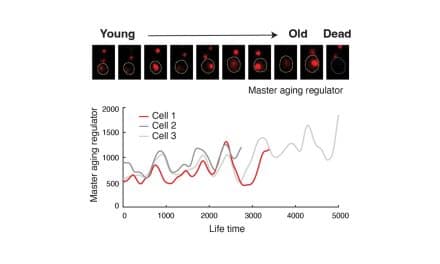A squid-inspired soft material is a switchable shield for light, heat, and microwaves, according to new research
With a flick of a switch, current technologies allow you to quickly change materials from being dark to light, or cold to hot, just by blocking or transmitting specific wavelengths.
But now, inspired by squid skin, researchers report a soft film that can regulate its transparency across a large range of wavelengths — visible, infrared and microwave — simultaneously.
They demonstrated the material in smart windows and in health monitoring and temperature management applications.
- ‘Nano inks’ could control temperature in buildings and cars
- New approach for majorana particle research in short nanowires
- Heat-efficient nanoparticles for treating cancer developed
Squid skin
Unique to the skin of squid and other cephalopods, iridocytes and chromatophores reversibly change their orientation and alter the animals’ appearance.
Similarly, scientists have developed artificial materials that transition from reflecting to transmitting visible and infrared wavelengths by shifting from wrinkly to cracked.
Because microwaves are much larger than these surface structures, they aren’t impacted. However, researchers recently found that dense networks of electrically conductive materials, such as silver nanowires, could block microwaves.
Transition between shielding
So, Yi Yang, Guangbin Ji, Zhichuan J Xu and colleagues wanted to integrate surface structures with a conductive network in a soft film that could quickly transition between shielding visible-to-microwave bands and allowing them through.
The researchers created a two-layer film by spraying a thin coating of silver nanowires onto a stretched elastomer.
Stretching and contracting the material produced cracks and bumpy wrinkles, respectively, in the metal surface.
Then, when the researchers contracted the material to a -30% strain, it blocked light, trapped infrared heat and shielded up to 99.9% of microwaves that could interfere with devices.
And as the material stretched apart, the expansion was directly related to an increase in optical transparency and heat and microwaves it transmitted.
Additionally, the team demonstrated how the material could be used for various applications, such as to transmit or block wireless electrocardiography signals, as a blanket to trap body heat or allow it to escape, or for tracking movements because the materials produce temperature changes that are detectable by infrared cameras.
The researchers say that their system’s ability to modify its transparency repeatedly and rapidly could benefit dynamic camouflage technologies, energy-efficient buildings, and adaptive personal and healthcare devices.
The research is published in ACS Nano.
Image: Compressing this soft material blocks a wide range of wavelengths, including visible light (left), and stretching it out lets them through (right). Credit: Adapted from ACS Nano 2023, DOI: 10.1021/acsnano.3c01836.














